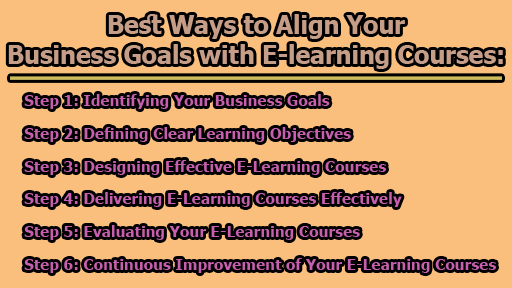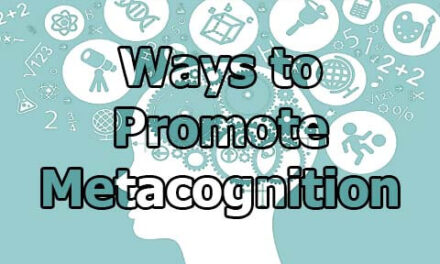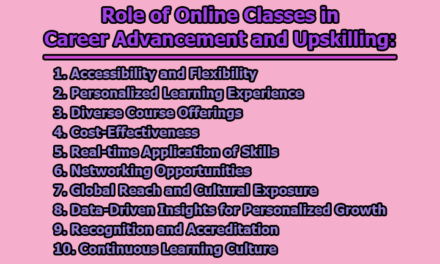Best Ways to Align Your Business Goals with E-learning Courses:
E-learning has revolutionized the way organizations deliver training, education, and development to their employees, customers, and partners. With the flexibility and accessibility it offers, e-learning has become an indispensable tool in achieving business goals and objectives. But, how do you ensure that your e-learning courses are in sync with your business strategy, and more importantly, how do you measure their impact and value on your organization’s performance? In this article, we’ll explore the best ways to align your business goals with e-learning courses and harness data and feedback to refine your e-learning strategy.
Step 1: Identifying Your Business Goals:
To successfully align your e-learning courses with your business goals, the first crucial step is to identify and define your organization’s specific objectives. In this stage, it is essential to ensure that your goals are SMART—Specific, Measurable, Achievable, Relevant, and Time-bound. Let’s delve into this pivotal step and understand how to establish SMART business goals.
1.1 Specific: Specificity is key to defining your business goals. You must clearly and precisely outline what you aim to achieve through your e-learning courses. Vague or broad goals can lead to confusion and ineffectiveness. For instance, instead of merely stating that you want to “improve customer satisfaction,” specify the aspects of satisfaction you want to enhance, such as response time or issue resolution.
1.2 Measurable: For your goals to be effective, they must be measurable. Establish criteria to evaluate your progress and determine whether you have achieved your desired outcome. In the context of e-learning, measuring success can be done through various metrics, such as completion rates, assessment scores, or customer feedback.
1.3 Achievable: While setting ambitious goals is admirable, they must also be attainable. Consider your organization’s resources, constraints, and capabilities. Ensure that the goals you set are within reach and can be realistically accomplished. For example, if you aim to “increase sales,” make sure that your sales team has the necessary training and tools to make this objective achievable.
1.4 Relevant: Relevance is about making sure your business goals are aligned with your organization’s mission and values. Your e-learning initiatives should support and enhance your broader business objectives. For instance, if your organization is committed to sustainability, it would be relevant to have e-learning courses on eco-friendly practices for your employees.
1.5 Time-bound: Setting a time frame for your goals creates a sense of urgency and accountability. It also helps you track progress and stay on course. For instance, instead of saying, “improve customer satisfaction,” you can set a time-bound goal like “increase customer satisfaction ratings by 10% within the next six months.”
By adhering to the SMART criteria, you transform vague notions into clear, actionable objectives. These specific, measurable, achievable, relevant, and time-bound goals become the guiding principles for designing your e-learning initiatives.
The first step in aligning your e-learning courses with your business goals involves identifying these goals with precision. By making them SMART, you lay a strong foundation for the subsequent stages of designing, delivering, evaluating, and improving your e-learning programs, ultimately ensuring their effectiveness in achieving your organization’s objectives.
Step 2: Defining Clear Learning Objectives:
After setting your SMART business goals, the next pivotal step is to define precise and actionable learning objectives. These objectives will serve as the building blocks for your e-learning courses and will guide your learners in acquiring the necessary knowledge, skills, and attitudes to achieve your business goals.
2.1 What are Learning Objectives?
Learning objectives are concise statements that specify what learners should know or be able to do upon completing an e-learning course. They provide a clear direction for course content and activities and act as a benchmark for assessing learner progress and performance.
2.2 Aligning Learning Objectives with Business Goals: To ensure that your e-learning courses effectively contribute to the attainment of your business objectives, it’s essential to align your learning objectives with your specific goals. This alignment is key to a successful e-learning strategy. Here’s how to go about it:
- Identify the Skills and Knowledge Needed: Begin by identifying the skills, knowledge, and attitudes that your learners need to acquire or enhance to contribute to the achievement of your business goals. For example, if your business goal is to “increase sales,” you might identify that learners need to understand the features and benefits of your product, effective communication techniques, and objection handling skills.
- Assessment and Evaluation Methods: Once you’ve defined your learning objectives, establish the methods for assessing and evaluating learner progress and performance. In the case of increasing sales, you might use quizzes, simulations, or role-play exercises to evaluate learners’ product knowledge, communication skills, and ability to handle objections effectively.
- Consider Bloom’s Taxonomy and Kirkpatrick’s Model: Models like Bloom’s Taxonomy and Kirkpatrick’s Four Levels of Evaluation can be invaluable in defining learning objectives and evaluation criteria. Bloom’s Taxonomy, for example, classifies learning objectives into levels of cognitive complexity, ranging from basic knowledge acquisition to higher-order skills like analysis and evaluation. Kirkpatrick’s Model provides a framework for evaluating the effectiveness of training and development programs. It includes four levels: Reaction, Learning, Behavior, and Results, each of which corresponds to different aspects of learning and development.
2.3 Sample Learning Objectives for Increasing Sales: Let’s take the example of a business goal to “increase sales” and define some corresponding learning objectives:
- Product Knowledge: Learners will be able to describe the features and benefits of our products and compare them to competitors.
- Communication Skills: Learners will demonstrate effective communication techniques when interacting with customers, highlighting the value of our products.
- Objection Handling: Learners will be able to identify common objections from customers and respond to them with persuasive and informative solutions.
These objectives serve as the foundation for your e-learning courses, ensuring that the content and activities are in line with your business goals and that learners acquire the necessary skills and knowledge to contribute to your organization’s success.
Defining clear and actionable learning objectives is an essential step in the process of aligning your e-learning initiatives with your business goals. By linking these objectives to the specific knowledge, skills, and attitudes required to achieve your goals and implementing effective assessment and evaluation methods, you create a roadmap for the design and development of e-learning courses that will be both engaging and effective.
Step 3: Designing Effective E-Learning Courses:
Once you’ve established your SMART business goals and defined clear learning objectives, the next vital step in aligning e-learning with your business objectives is designing your e-learning courses. Effective course design ensures that your content is engaging, relevant, and conducive to learning. Let’s delve into the process of designing e-learning courses that are in harmony with your business goals.
3.1 Structuring and Sequencing Content:
- Curriculum Development: Begin by structuring the content for your e-learning courses. Organize the material in a logical and sequential manner to facilitate a smooth learning experience. Ensure that the content aligns with your defined learning objectives and supports the achievement of your business goals.
- Microlearning: Consider breaking down your content into smaller, digestible modules or lessons. Microlearning is an effective strategy that caters to the modern learner’s preference for short, focused bursts of information.
3.2 Choosing Instructional Methods and Strategies:
- Active Learning: Encourage active engagement among learners. Utilize interactive elements like quizzes, discussions, and hands-on activities to reinforce learning.
- Scenario-Based Learning: If your business goal is to improve customer satisfaction, as an example, leverage scenario-based learning. Include real-life scenarios, simulations, case studies, and role-plays that allow learners to practice their customer service skills in realistic situations. This practical application of knowledge can significantly enhance skills and contribute to your desired outcome.
- Gamification: Consider integrating gamification elements into your e-learning courses to boost learner engagement and motivation. This can include leaderboards, badges, and rewards for accomplishing certain milestones, creating a more interactive learning experience.
3.3 Engaging and Motivating Learners:
- Visual Appeal: Use multimedia elements, such as images, videos, and infographics, to make your content visually appealing. Well-designed visuals can enhance comprehension and retention.
- Narration and Storytelling: Incorporate compelling narratives and storytelling techniques to make the content relatable and memorable for your learners. Storytelling can evoke emotions and make the material more engaging.
- Personalization: Tailor the learning experience to individual learners as much as possible. Utilize adaptive learning techniques that adjust the content based on each learner’s progress and needs.
3.4 Supporting Learners:
- Responsive Design: Ensure that your e-learning courses are accessible on various devices and screen sizes. Responsive design allows learners to access content at their convenience.
- Feedback and Support: Provide opportunities for learners to ask questions or seek clarification. Implement discussion forums, chat support, or email assistance to offer guidance and support.
- Progress Tracking: Incorporate features that enable learners to track their progress within the course. This can include progress bars, completion percentages, and checkpoints.
3.5 Leveraging Design Methodologies:
- ADDIE (Analysis, Design, Development, Implementation, Evaluation): The ADDIE model is a well-established framework for instructional design. It involves a systematic approach to course development, ensuring that your e-learning courses are effective and meet your business goals.
- SAM (Successive Approximation Model): SAM is an agile and iterative approach to design, focusing on collaboration and continuous improvement throughout the course development process.
- Agile: The Agile methodology is often used in e-learning development to provide flexibility and responsiveness to changing learner needs and business goals.
Designing effective e-learning courses is a critical step in aligning your e-learning initiatives with your business goals. Carefully structuring, sequencing, and delivering content, along with selecting appropriate instructional methods, strategies, and techniques, will make your e-learning courses engaging and valuable. Additionally, consider design methodologies like ADDIE, SAM, or Agile to streamline the course development process and ensure alignment with your overarching business objectives. By focusing on creating a compelling and efficient learning experience, you can drive your organization closer to achieving its desired outcomes.
Step 4: Delivering E-Learning Courses Effectively:
The successful delivery of your e-learning courses is a critical component of aligning them with your business goals. Choosing the right technology, platform, and format ensures that your courses are accessible and efficient. This step involves making strategic decisions to meet your organization’s specific needs and objectives. Consider the following when delivering your e-learning courses:
4.1 Technology and Platform Selection:
- Learning Management Systems (LMS): LMS platforms are designed to manage, deliver, and track e-learning content. They offer a centralized hub for course administration, user registration, progress tracking, and reporting. When your business goals involve centralized control and monitoring of training, LMS can be a valuable choice.
- Content Management Systems (CMS): CMS platforms are more content-centric and can be suitable for organizations that require content delivery, web publishing, and easy content updates. They are particularly useful for sharing information with large audiences.
- SCORM (Sharable Content Object Reference Model): SCORM is a set of standards that enables the interoperability of e-learning content across various platforms and LMS. It ensures that your e-learning content can be easily shared and reused, which can be crucial for organizations with a distributed workforce.
4.2 Delivery Format:
- Online and On-Demand: For many business goals, delivering e-learning courses online and on-demand is a flexible and cost-effective solution. This approach allows learners to access the content whenever and wherever it suits them, reducing downtime and travel expenses.
- Mobile Accessibility: With the proliferation of mobile devices, ensuring that your e-learning courses are accessible on smartphones and tablets is vital. A responsive design or mobile app can be beneficial, especially if your business goals involve reaching a mobile workforce or catering to busy professionals.
4.3 Technical Requirements and Specifications: Evaluate the technical requirements for your e-learning courses. Consider factors such as internet connectivity, browser compatibility, and device specifications. Ensuring that your courses work seamlessly across various setups is essential for achieving your goals.
4.4 Quality, Security, and Compatibility: Ensuring the quality, security, and compatibility of your e-learning solutions is non-negotiable. High-quality content and user experiences are crucial for engaging learners. Additionally, protecting sensitive data, especially if your e-learning content contains proprietary or confidential information, is essential.
Aligning with Business Goals: To illustrate the alignment with a business goal, let’s consider an example where the objective is to “reduce costs.” In this case, delivering e-learning courses online, on-demand, and making them accessible on any device using a cloud-based or hosted e-learning solution is an ideal approach. This approach minimizes expenses related to travel, physical resources, and in-person training. It also allows employees to learn at their own pace, reducing time away from their regular tasks.
Delivering e-learning courses effectively is essential to aligning them with your business goals. By carefully selecting the right technology, platform, and format, as well as considering technical requirements, quality, security, and compatibility, you can ensure that your e-learning initiatives are accessible and efficient. The choice of delivery method should always correspond with your overarching business objectives, ensuring that you are on the right path to achieving your specific goals.
Step 5: Evaluating Your E-Learning Courses:
Effective evaluation is a significant phase in aligning your e-learning courses with your business goals. It allows you to assess whether your courses are meeting their intended objectives and provides insights to make necessary improvements. In this step, you’ll measure the effectiveness, efficiency, and learner satisfaction of your e-learning courses using a combination of data and feedback. Key Considerations for Evaluating E-Learning Courses:
5.1 Collecting Data: Begin by gathering relevant data that provides insights into the performance of your e-learning courses. Depending on your business goals, you may want to track various metrics, including:
- Completion Rates: The percentage of learners who successfully complete the course.
- Test Scores: Assessment results that indicate the level of knowledge acquisition.
- Time Spent: The amount of time learners spend on the course material.
- Performance Indicators: Metrics specific to your business goals, such as increased sales, cost reduction, or improved customer satisfaction.
5.2 Feedback Mechanisms: Create channels for learners to provide feedback on the e-learning experience. Surveys and quizzes are excellent tools for collecting learner opinions and gauging their satisfaction. Encourage learners to share their thoughts on the course content, interactivity, and user-friendliness.
5.3 Analytics and Dashboards: Utilize data analytics tools and dashboards to gain a comprehensive view of the performance of your e-learning courses. Analytical tools can help you visualize trends, identify areas for improvement, and monitor the impact of the courses on your business goals.
5.4 Alignment with Business Objectives: Regularly assess whether your e-learning courses are aligned with your specific business goals. If your objective is to enhance productivity, ensure that the data and feedback you collect reflect improvements in employee productivity and the achievement of productivity-related metrics.
5.5 Continual Improvement: Use the insights obtained through data and feedback to make informed decisions about how to enhance your e-learning courses. If the data suggests that certain content is less effective or if learner feedback highlights areas for improvement, take action to refine your courses.
5.6 Iterative Process: Evaluation should be an ongoing, iterative process. Regularly review and analyze data and feedback, make adjustments to your e-learning courses, and then re-evaluate to measure the impact of those changes. This iterative approach ensures that your courses remain effective in meeting your business goals.
Example of Evaluation for Enhancing Productivity: Suppose your business goal is to enhance productivity, and you’ve implemented e-learning courses to achieve this. Here’s how you might evaluate the effectiveness of your courses:
- Monitor completion rates to ensure that employees are engaging with the material.
- Assess test scores to gauge knowledge retention and application.
- Analyze time spent on the courses; a decrease in time spent might indicate that learners are grasping the content more efficiently.
- Evaluate performance indicators such as increased output, reduced error rates, or faster task completion times.
- Collect feedback through surveys or quizzes to understand employee perceptions of the courses and their impact on productivity.
The evaluation of e-learning courses is a vital step in ensuring that they align with your business goals. By collecting data and feedback, utilizing analytics and dashboards, and regularly assessing alignment with business objectives, you can continuously improve your courses to better meet the needs of your organization. This iterative approach guarantees that your e-learning initiatives remain effective and contribute to the achievement of your specific business objectives.
Step 6: Continuous Improvement of Your E-Learning Courses:
The final step in aligning your e-learning courses with your business goals is the ongoing process of improvement. By actively analyzing the insights gained through evaluation results and feedback, identifying strengths and weaknesses, and staying attuned to opportunities and threats, you can refine your e-learning initiatives to make them even more effective. Here’s how to implement this continual improvement process:
6.1 Identify Strengths and Weaknesses: Thoroughly analyze the data and feedback obtained from the evaluation phase. Identify what’s working well in your e-learning courses and where improvements are needed. Consider both the content and the delivery methods.
6.2 Recognize Opportunities and Threats: Look for opportunities to enhance your e-learning courses in ways that align with your business goals. Simultaneously, be vigilant about any threats that could hinder your courses’ effectiveness. Keep an eye on changes in technology, regulations, or market conditions that might impact your e-learning initiatives.
6.3 Implement Changes and Enhancements: Based on your analysis, make informed decisions about what changes, updates, or enhancements are needed. This could involve revising course content, adjusting delivery methods, or introducing new interactive elements to better engage learners.
6.4 Monitor and Review: After implementing changes, closely monitor the impact and value of these enhancements. Regularly review the performance of your e-learning initiatives to ensure they continue to align with your business goals and objectives.
6.5 Foster Innovation: If your business goal is to foster innovation, consider incorporating features, content, or interactions in your e-learning courses that encourage learners to think creatively, collaborate, and solve problems. Foster an environment that stimulates inventive thinking.
6.6 Utilize Improvement Tools: To facilitate the improvement process, consider using tools and methodologies such as:
- PDCA (Plan-Do-Check-Act) Cycle: This iterative framework involves planning, implementing, checking the results, and acting on findings to make continuous improvements.
- SWOT Analysis: Conduct a SWOT analysis to identify your e-learning courses’ strengths, weaknesses, opportunities, and threats. This analysis can provide a holistic view of where improvements are needed.
- A/B Testing: Test different versions of your e-learning courses to determine which one is more effective in achieving your business goals. A/B testing allows you to make data-driven decisions about course improvements.
Example of Improvement for Fostering Innovation: If your business goal is to foster innovation, you may decide to implement the following improvements in your e-learning courses:
- Introduce collaborative projects or group assignments that encourage learners to work together on creative solutions.
- Incorporate real-world problem-solving scenarios and case studies to stimulate innovative thinking.
- Add a discussion forum or platform for learners to share and discuss new ideas.
- Provide additional resources or modules on design thinking, brainstorming techniques, or innovation processes.
By consistently seeking ways to enhance your e-learning courses and encouraging innovation, you can ensure that they remain aligned with your business objectives and adapt to changing needs and challenges.
Continual improvement is an essential aspect of aligning e-learning courses with your business goals. By identifying strengths and weaknesses, recognizing opportunities and threats, implementing changes, monitoring and reviewing, and fostering innovation, you can keep your e-learning initiatives effective and responsive to your organization’s evolving needs. This ongoing process ensures that your courses remain a valuable asset in achieving your specific business objectives.
In conclusion, aligning business goals with e-learning courses is a systematic process that requires careful planning, diligent execution, and continuous improvement. By identifying your business goals, defining learning objectives, designing courses with the right methodologies, delivering them through suitable platforms, evaluating their effectiveness, and making improvements based on feedback and data, you can ensure that your e-learning initiatives are a powerful driver of success for your organization. Remember that this alignment is an ongoing endeavor, and staying committed to it will yield significant benefits in terms of achieving your business objectives.

Former Student at Rajshahi University










